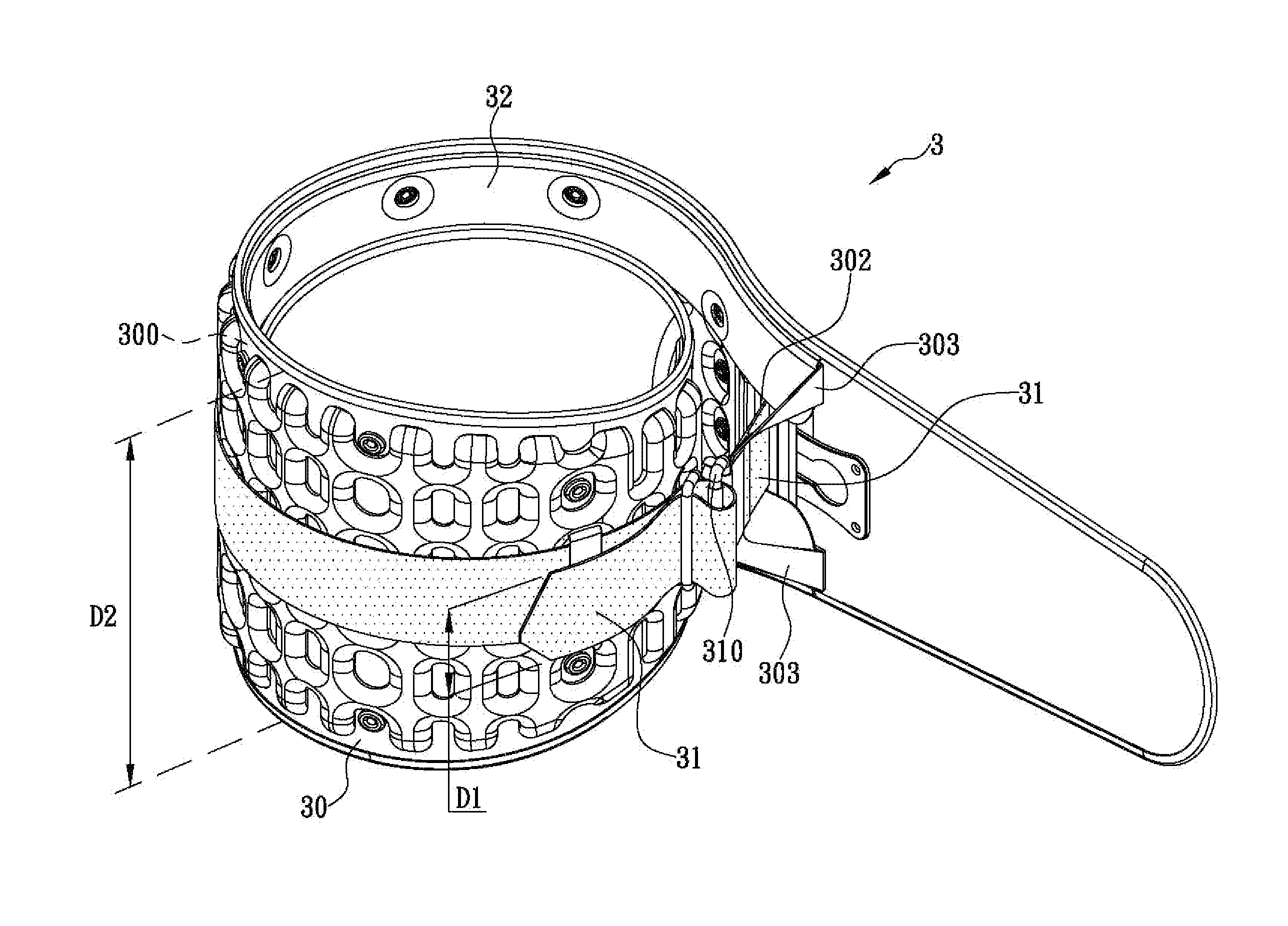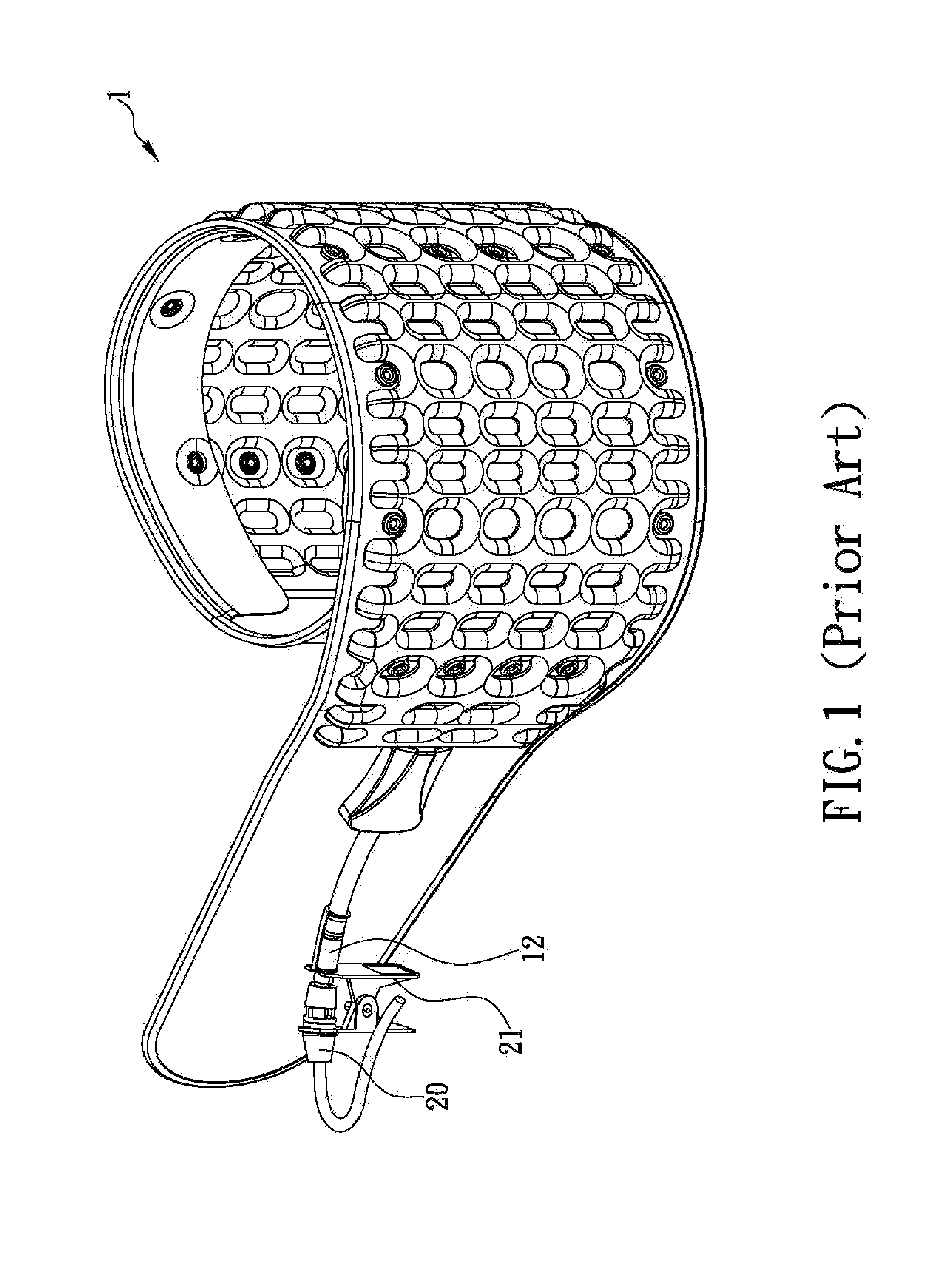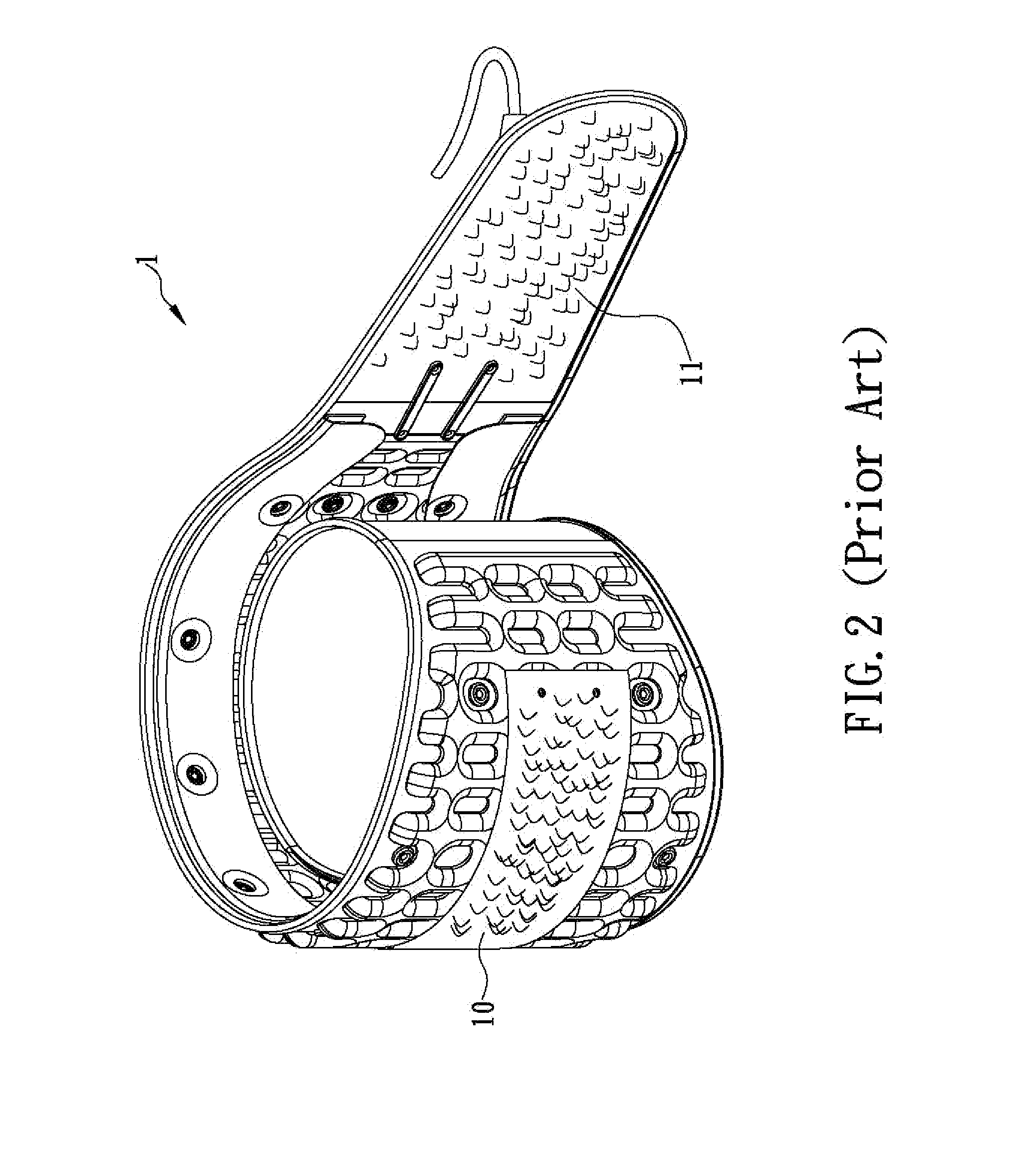Air traction belt structure
a technology of air traction and belt structure, which is applied in the field of air traction belt structure, can solve the problems of traction belt useless, traction belts that do not provide the desired support, traction belts that are difficult to use, etc., and achieves the effects of less physical strength and agility, convenient use, and convenient tightening
- Summary
- Abstract
- Description
- Claims
- Application Information
AI Technical Summary
Benefits of technology
Problems solved by technology
Method used
Image
Examples
Embodiment Construction
[0026]The inventor of the present invention has long been engaged in research and development in the medical aid-related fields. In the process, the inventor has found that the conventional air fraction belts are very likely to press only loosely against the waist and hence fail to provide the desired support, traction, stretch, decompression and protection. This is not only because the tightening and fastening action required is difficult to perform by those with relatively less physical strength and agility, but also because the conventional air traction belts are too wide to be grasped and pulled. Although attempts have been made to solve the aforesaid problems by further improving the structures of the conventional air traction belts, an ideal solution has yet to be found. In consideration of this, the inventor came up with the idea of movably surrounding an inner inflatable traction belt with an outer solid support belt. Thus, by pulling tight the outer solid support belt, the ...
PUM
 Login to View More
Login to View More Abstract
Description
Claims
Application Information
 Login to View More
Login to View More - R&D
- Intellectual Property
- Life Sciences
- Materials
- Tech Scout
- Unparalleled Data Quality
- Higher Quality Content
- 60% Fewer Hallucinations
Browse by: Latest US Patents, China's latest patents, Technical Efficacy Thesaurus, Application Domain, Technology Topic, Popular Technical Reports.
© 2025 PatSnap. All rights reserved.Legal|Privacy policy|Modern Slavery Act Transparency Statement|Sitemap|About US| Contact US: help@patsnap.com



